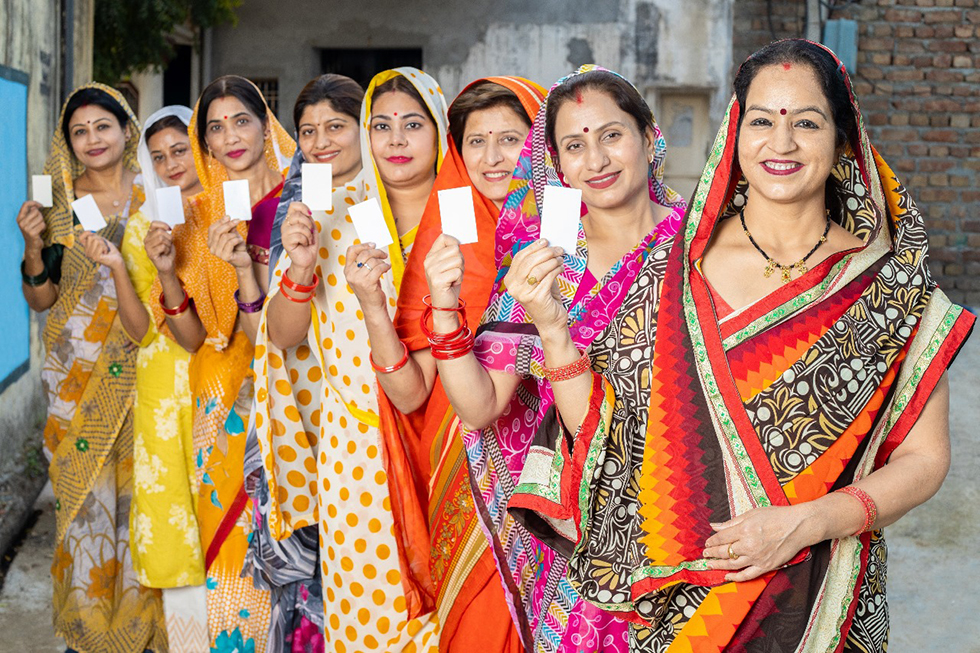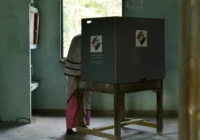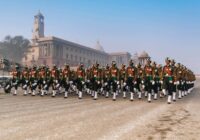From April 19 to June 1, 65.79% of India’s 900 million eligible citizens cast their votes. Indian democratic elections are the most massive human mobilizations in the world — more than any other election, war, pilgrimage, migration movement or world’s fair. India marshaled more than one million polling stations and even used elephants to carry voting machines to the Himalayas. Unlike in many other democracies, electoral turnout in India is higher among the poor than the rich, higher among the less educated than graduates and higher in the villages than in the cities. In the last elections, five years ago, women voted (a little) more than men, and this year, they were nearly dead even.
Indian democracy thrived despite economic headwinds
The success of democracy in India has dismissed the pessimistic auguries after Independence and the first election in 1952. But India is not an isolated case. Let’s look at the numbers. A little more than half of the world’s population lives in democracy. Let’s consider “rich” countries are to be those above the world average per capita income in purchasing power, around $18,000 per year. About half of the world population living in democracies lives in relatively poor countries like India, Indonesia and South Africa, while about half of the population living in dictatorships lives in relatively rich countries like China, Saudi Arabia and Russia.
The case of India has puzzled some traditional sociologists because it does not fit the classical doctrine that economic development must precede democracy. Analysts from Seymour Lipset to Adam Przeworski have made this observation; the latter has repeatedly predicted that India would become a dictatorship before 2030. Yet India is not an exception or an anomaly. The earliest modern democracies, such as Norway, Switzerland, the United Kingdom and the United States, had also enforced broad (male) suffrage for competitive elections in the nineteenth century, before industrialization and when they were fairly poor — as poor as India was in the mid-twentieth century or as it is now.
For about forty years after independence, when the Indian National Congress party, initially led by Jawaharlal Nehru, dominated the government, the centralized and closed Indian economy grew at an often-mocked annual rate of 1%. But since the early 1990s, when it has liberalized and opened to new technologies and globalization, India has enjoyed significant benefits from open trade and capital inflows. Against all expectations, the Indian per capita income at purchasing power has multiplied by six in thirty years.
Precisely because India was late in adopting more sophisticated institutions and policies, it has been able to adapt more readily to the global economy. In contrast to developed countries with old technologies and onerous preexisting social arrangements, India has not had to dismantle former industrial and bureaucratic structures that might have obstructed innovation.
Indian democracy is healthy in the 21st century
Consequently, Indian citizens declare that they prefer democracy to an authoritarian regime by a proportion of four to one. In the most recent international poll by the Pew Research Center, 72% of Indian citizens declared that they were satisfied with the way democracy works in their country — thus coming second only to Sweden and far above, for example, the United States at 33%.
The Congress Party, always led by Nehru’s descendants in the Gandhi family has traded power with the current incumbent People’s Party (BJP) led by Prime Minister Narendra Modi seven times.
The electoral system is a copy of the colonial British tradition of single-member districts with simple plurality rule, which permits a party with less than 40% of votes to get an absolute majority of seats in the lower chamber of parliament. Yet, while numerous minor parties run independently, the two larger parties run in very broad electoral coalitions: In this year’s election, the BJP ran with a National Democratic Alliance with 12 mostly state-based or ethnic parties, while the opposition Congress is ran the “India National Development Inclusive Alliance” (so named to fit the acronym INDIA) with 23 parties, including several on the far left. Their participation in federal politics also works as a factor of the Indian union.
After the end of the Cold War, India initially replaced its old foreign policy of “non-alignment” with one of “strategic autonomy.” India still lacks a permanent seat on the United Nations Security Council despite having become a nuclear power, and it is not a member of the Group of Seven despite being the fourth democratic economy in size. Nevertheless, India has become more dynamic in supporting the democratization of its neighboring countries in South Asia, which is still a poorly integrated region. It is also the oldest and most stable democracy of the so-called BRICS (Brazil, Russia, India, China and South Africa) group, now enlarged to nine members, and has recently increased its relations and deals with the United States and the European Union in a world of fluctuating international coalitions. From a global and historical perspective, democracy in India is already one of the most remarkable contemporary achievements of humankind.
The views expressed in this article are the author’s own and do not necessarily reflect Fair Observer’s editorial policy.
Support Fair Observer
We rely on your support for our independence, diversity and quality.
For more than 10 years, Fair Observer has been free, fair and independent. No billionaire owns us, no advertisers control us. We are a reader-supported nonprofit. Unlike many other publications, we keep our content free for readers regardless of where they live or whether they can afford to pay. We have no paywalls and no ads.
In the post-truth era of fake news, echo chambers and filter bubbles, we publish a plurality of perspectives from around the world. Anyone can publish with us, but everyone goes through a rigorous editorial process. So, you get fact-checked, well-reasoned content instead of noise.
We publish 2,500+ voices from 90+ countries. We also conduct education and training programs
on subjects ranging from digital media and journalism to writing and critical thinking. This
doesn’t come cheap. Servers, editors, trainers and web developers cost
money.
Please consider supporting us on a regular basis as a recurring donor or a
sustaining member.
Will you support FO’s journalism?
We rely on your support for our independence, diversity and quality.










Comment